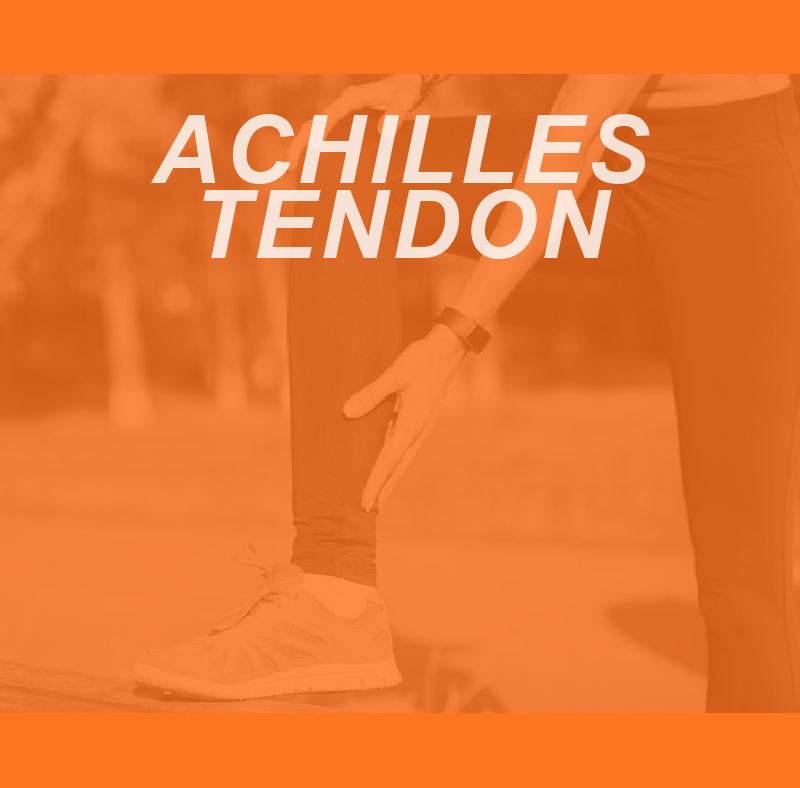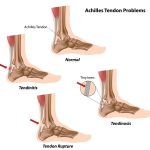
In Greek mythology, the warrior Achilles was known to have one weak spot: his heel. Because of this, the idiom Achilles’ heel is often used to describe one’s weakness or vulnerability. It might be surprising to learn that the Achilles tendon is actually the strongest tendon in the body. A closer look at the Achilles tendon can give a better understanding as to why, despite its strength, this tendon is vulnerable to injury.
More importantly, understanding the Achilles tendon allows us to be vigilant in injury prevention and to support our clients as they try new activities or as they progress.
Achilles tendon explained
The Achilles tendon is the strongest and largest tendon in the body. This thick band of tissue connects the calf muscles (gastrocnemius and soleus) to the heel bone (calcaneus). When the calf muscles contract, the Achilles pulls on the heel, allowing us to rise up on our toes (plantarflexion) when we run, walk, or jump.
Vulnerable to injury
The main injuries associated with the Achilles tendon are:
- Tendonitis or tendinopathy–when the tendon becomes inflamed, swollen, and irritated, often due to overuse and repetitive stress
- Rupture–a complete or partial tear in the tendon.

During movements like walking, running, and jumping, the Achilles is subjected to the highest loads in the body, with tensile loads up to 10 times the body’s weight. There is even greater stress on the tendon when sprinting or running up and downhill.
Achilles tears tend to happen with abrupt movements like quickly speeding up, slowing down, or pivoting. And while research shows that Achilles tears include clear degenerative changes before rupture, only 15-20% of those studied reported any sort of heel pain or tendinosis before the injury. This means many ruptures occur suddenly and without any warning signs or symptoms.
The Achilles tendon is prone to injury because it receives a limited blood supply. Limited blood supply can prevent adequate tissue repair which not only contributes to degeneration but also means there will be a long recovery once injury occurs; complete healing can take up to 6 months.
Who is at risk?
Anyone can develop an Achilles tendon injury, but there are some common risk factors:
- Athletes in running sports or sports that abruptly change direction (i.e., tennis, football, basketball)
- Increased amount or intensity of an activity/sport or beginning a new activity/sport
- Tight (overactive) calf muscles when beginning an activity or sport
- Improper footwear when exercising
- Exercising on uneven or unstable surfaces
- Certain antibiotics (fluoroquinolones) quadruple the risk of Achilles tendon rupture
Prevention is key
Understanding the risk factors that can make someone more vulnerable to injury, there are several ways we can prevent Achilles tendon injuries in ourselves and our clients:
- Foam roll* or release calf muscles with an appropriate tool, then stretch for 30-90 seconds
- Warm-up before exercise
- Progress slowly with exercises that may put stress on the Achilles (i.e., slowly and gradually add distance, incline, or speed with running)
- Mix up training with a combination of high and low-impact exercises
- Ensure proper footwear and a safe, even surface for exercise
- Avoid strenuous exercise when taking certain medications
*Fun fact: Foam rolling improves blood flow to the myofascial tissue
Strong, but not invincible
Much like its namesake warrior, our Achilles’ tendons are exceptionally strong, but they are far from invincible. When we understand the demand and stress that this tendon is subject to, we can better understand the ways to support it as we train.
References:
https://www.webmd.com/fitness-exercise/picture-of-the-achilles-tendon#1
https://www.hopkinsmedicine.org/health/conditions-and-diseases/achilles-tendon-injuries
https://journals.lww.com/co-rheumatology/Abstract/2001/03000/Achilles_tendon_injuries.9.aspx
https://pubmed.ncbi.nlm.nih.gov/7809555/
https://pubmed.ncbi.nlm.nih.gov/9820283/
https://www.runnersworld.com/news/a20797625/fda-warns-of-tendon-damage-linked-to-antibiotics/#:~:text=Because%20much%20of%20the%20Achilles%20tendon%20has%20little,you%20take%20the%20medication%2C%20the%20greater%20the%20danger.
https://www.webmd.com/fitness-exercise/recovering-from-achilles-tendon-injury#1






